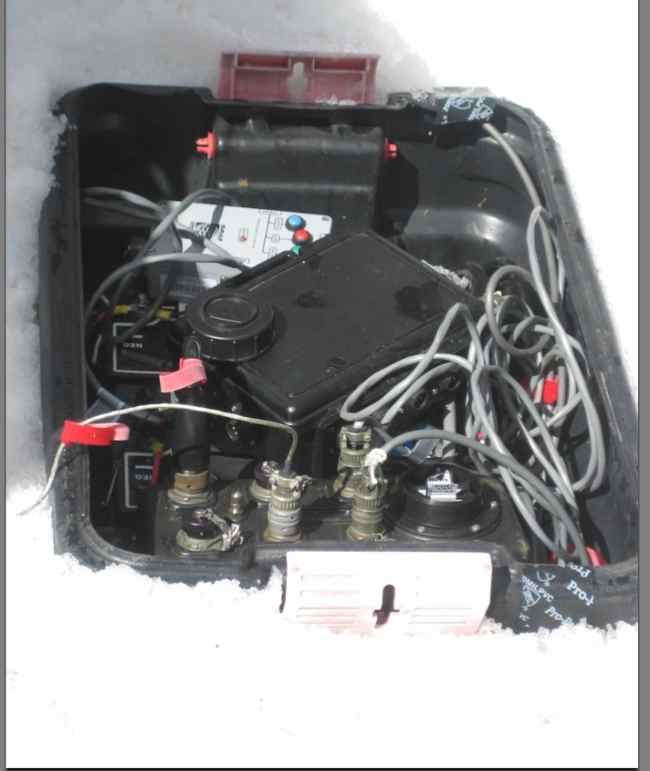Station Enclosures
Introduction:
For the typical EPIC experiment, we refer to the housing for DAS, battery, power box, sensor's breakout box, and interconnecting cables as the Station Enclosure. This is separate from the Sensor Vault. In the typical EPIC experiment, PI's provide the design and materials and labor for both the sensor vaults and station enclosures, with guidance from the EPIC. In contrast, for Flexible Array (FA) experiments, EPIC generally supplies materials for both the sensor vaults and the station enclosures. PI's and students still supply labor (for FA experiments). The station enclosure for a EPIC experiment will depend on materials available in the country or region of the experiment.
The station enclosure must remain dry. If it floods, you will lose data and the equipment will be ruined. Siting the station where water will drain away is very important (other siting considerations are also discussed at the Siting webpage). One kind of enclosure often used is a plastic box with a lid, sometimes refered to by brand name 'Action Packer'. They come in various sizes and you will need to know the number and size of the batteries and the volume of station equipment you will be using, in order to correctly size your station enclosures. Cables from the sensor, solar panels, and GPS must be enter the enclosure, so you will have to drill holes or otherwise create cutouts for cable entry. Then the trick is to seal those holes.
Protect the battery leads from possible shorting. Arrange equipment in the enclosure neatly; coil excess cabling; make sure the datalogger and recording medium are accessible for station servicing tasks.
We advise not to bury the station enclosure below grade and we suggest putting a drain hole in the bottom of the enclosure. It is dfficult to keep any moisture from ever entering the enclosure, so please give moisture a place to exit the enclosure. You may dig a hole several inches deep to set the enclosure in, and later cover its lid with a tarp and further insulate by piling dirt on top (or by covering with a reflective tarp to help keep the temperature a few degrees lower in hot climates where you are worried about high temperatures affecting instrument performance). The FA station enclosures are typically painted white, which has the same effect as a reflective tarp would.
In snowy climates with strong seasonal variations, the time of year when the station enclosure is most vulnerable to flooding is spring. The sun is becoming stronger, the snow wetter, and freeze thaw cycles can wreak havoc with your drainage systems. The station pictured below is being serviced in late winter. Fortunately, the station enclosure is still dry.

Salient Features of FA stations:
- 1 ½ - 2 hour setup time in the field.
- Minimal supplies/consumables to purchase in the field.
- Sand, Quickcrete, Grout & Fencing Materials
Search Keywords:
EPIC, EarthScope, Instrumentation, FA, Flexible Array, Seismic, Sensor, Seismometer, Enclosure, Instrumentation.

- Home
- General Information
- Instrumentation
- Dataloggers
- Sensors
- All-In-One Systems
- Power Systems
- Field Procedures
- Controlled Sources
- Seismic Source Facility
- Magnetotelluric Systems at EPIC
- Ground Penetrating Radar
- Power and Memory Calculations Form
- Data Archiving
- Apply for a PI Account
- Experiment Scheduling
- Polar
- Hardware & Software Notes
- Software


